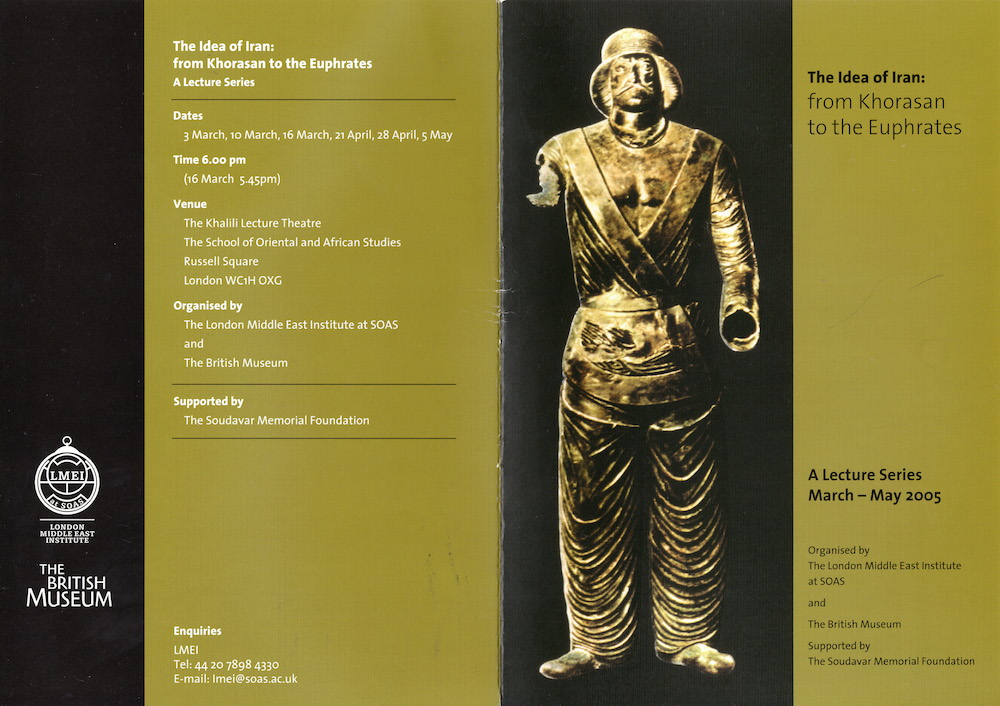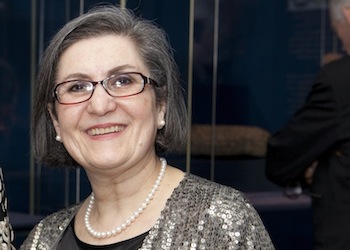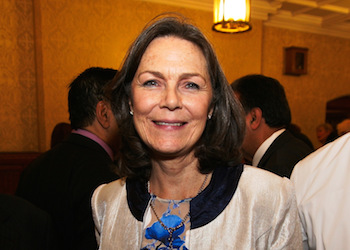The Idea of Iran: From Khorasan to the Eurphrates

ollowing the success of the first in the series on The Idea of Iran, the London Middle East Institute at SOAS and the British Museum presented a second series of lectures in which scholars from Europe, the United Kingdom and the United States talked about subjects relating to the Parthian period in the history of Iran.
Speakers

The Iranian Revival in the Parthian Period
Dr Vesta Sarkhosh Curtis, Curator of Ancient Coins, the British Museum, and Secretary of the British Institute of Persian Studies
The Arsacid Parthians, who were Iranian nomads from the northeast of the Caspian Sea, entered the political arena around the middle of the third century BC and remained in power for over four hundred years. They succeeded in bringing together the artistic traditions of Achaemenid Persia, the ancient Near East and their own nomadic background. At the same time they adopted Hellenistic styles and artistic motifs. Some of the most important features of Sasanian and Islamic art, e.g. the eyvan, and stucco decoration, have their origin in Parthian art.

Gondophares and the Indo-Parthians
Professor David Bivar, Professorial Research Associate, Department of Art and Archaeology, SOAS
The Indo-Parthian kingdom came into being from the special status of the Parthian Suren family, the premier lineage of the six noble houses of the Arsacid state. At the enthronement of the first Arsaces, about 238 BC, this family placed the royal tiara on the king’s head, a function thereafter exercised by his descendants. The head of the house also acted as commander-in-chief of the royal armies. In c. 130 BC the nomad tribes of the Sacaraucae (‘Itinerant Sacae’), displaced from modern Kazakhstan by the arrival of the Tocharians, collided with the Parthian eastern frontier, and in 128 BC destroyed a Parthian army, killing the king, Phraates II. The greatest of the Indo-Parthian kings was Gondophares, reigning from AD 19 to AD 45, and celebrated for his encounter with the Christian apostle Thomas.
The Fascinating Foe: Images of the Orient in Imperial Rome
Professor Rolf Michael Schneider, Professor of Classical Archaeology, Ludwig-Maximilians University
The perception of each visual culture is defined by two different sets of images: one set is shaped within the culture itself whereas the other is forged outside its boundaries. The most dominant culture outside Parthia in the Mediterranean world was Rome. She produced powerful images of Orientalism based on earlier Greek models and articulated by specific Roman needs. From the time of Augustus onwards in the visual narratives of Rome, no other non-Roman was so omnipresent as the (Pathian) Oriental. This lecture approaches the Roman imagery of the Parthians as a crucial medium representing central western views on the cultures of the East. The imagery of Rome reflects more than any other ancient medium the complexity which shaped Roman perceptions of the Parthian Other – and occidental preoccupations with the Orient down to our present day.
Parthia and China: A Historical and Archaeological Investigation
Dr Wang Tao, Senior Lecturer in Chinese Archaeology, SOAS, and the Institute of Archaeology, University College London
The Parthian empire was the most dominant power in Central Asia between the third century BC and the third century AD. During this time China had also seen its own course of empire building. Both empires contributed to the opening of the ‘Silk Road’ and ambassadors and envoys were sent from one empire to the other. Numerous accounts of the remains have been cited in the previous studies of the cultural exchanges between China and the Parthians. Does this mean we should question the written records? Or have we missed obvious archaeological evidence perhaps owing to a lack of unerstanding? This paper aims to highlight the historical information in the Chinese records, to discuss its significance in the cultural history of ancient Iran, as well as China, and to re-examine recent archaeological finds.
Fars under the Seleucids and the Parthians
Professor Josef Wiesenhöfer, Professor of Ancient History, University of Kiel
Until recently, the history of Persis (Parsa/Fars) under the Seleucids and the Parthians was one of the least known subjects of Ancient History. Consequently, the ‘dynasts’ (Frataraka) and ‘kings’ who governed the former Achaemenid heartland after Alexander’s conquest, were mostly considered stakeholders of an anti-Hellenistic or anti-Arsacid spirit. Today, we know that the Frataraka started as sub-Seleucid dynasts at the beginning of the second century BC, and we have a better idea of their relationship with their overlords, their predecessors and other historical background. We are only recently able to understand the specific role of this sub dynasty in the pre-Sasanian political history of Fars. The lecture aims to shed light on the dark ages of Fars between c. 323 BC and AD 224.

The Videvdad: Its Ritual-Mythical Significance
Professor Prods Oktor Skjærvø, Aga Khan Professor of Iranian Studies, Harvard University
The Videvdad is an Avestan text recited in ceremonies of purification. The myths that structure the text go from Ahura Mazda’s creation of the ordered world, via the original relapse into chaos caused by the imperfections introduced by the Evil Spirit, to the final healing of the world. This muth is the common Zoroastrian one, which also underlies the Yasna, of the rebirth of the sun and the ordered cosmos from chaos by the removal of the forces of darkness. I shall discuss various aspects of the text:
- Its age and transmission. It is not a ‘post-Achaemenid composition’.
- The place of the text in the purification ritual and the ‘Videvdad Sade’.
- Its structure.
Convenors

Dr Vesta Sarkhosh Curtis is Curator of Middle Eastern Coins at the British Museum and is responsible for its collection of pre-Islamic Iranian coins (from the third-century BC until the middle of the seventh-century AD), which includes both Parthian and Sasanian coins. She also looks after coins of the Islamic world beginning with the Umayyad and Abbasid periods and including coins of the Samanid and Buyid, Seljuk, Mamluk, Ayyubid and Fatimid, Ilkhanid and Timurid, Safavid and Qajar dynasties. Projected have included The Sasanian Coin Project, a collaborative project with the National Museum of Iran in Tehran, and now successfully completed. The result is a two-volume Sylloge of Sasanian coins of the third- to seventh-centuries AD while Dr Sarkhosh Curtis currently jointly-directs the International Parthian Coin Project, The Sylloge Nummorum Parthicorum (SNP), and is Joint Editor of the SNP series. This multi-institutional project will record Parthian coins of the third-century BC to the third-century AD found in London, Vienna, Tehran, Paris, Berlin, and the American Numismatic Society, New York.

Dr Sarah Stewart is Lecturer in Zoroastrianism in the Department of the Study of Religions at the School of Oriental and African Studies, University of London and Deputy Director of the London Middle East Institute, also at SOAS. She has been co-convenor of the ‘Idea of Iran’ symposia since its inception in 2006 and has co-edited five volumes in the ‘Idea of Iran’ publication series with I.B.Tauris. She serves on the Academic Council of the Iran Heritage Foundation and has been a longstanding Fellow of the British Institute of Persian Studies, most recently serving as its Honorary Secretary until 2013, in which year Dr Stewart co-organised the acclaimed exhibition: ‘The Everlasting Flame: Zoroastrianism in History and Imagination’. Her publications include studies on Parsi and Iranian-Zoroastrian living traditions and is currently working on a publication (in collaboration with Mandana Moavenat) on contemporary Zoroastrianism in Iran.

